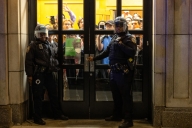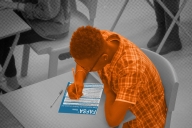You have /5 articles left.
Sign up for a free account or log in.
Indigenous students reported the highest rates of negative mental health related to the pandemic compared to students in all other racial and ethnic groups who visited their college counseling centers last year, according to new data released by the Center for Collegiate Mental Health. Black, Hispanic or Latino, and Indigenous students also reported the highest rates of grief and loss, a blog post about the data said.
Between 71 and 72 percent of American Indian, Alaska Native, Native Hawaiian or Pacific Islander students who started treatment through their college counseling center reported negative mental health impacts due to COVID-19, a higher rate than Black students (56 percent), Hispanic or Latino students (65 percent), Asian students (62 percent) and white students (68 percent), the CCMH blog post said. LGBTQ students, especially nonbinary, pansexual, queer and transgender male students, also experienced higher rates of negative mental health during the pandemic than their non-LGBTQ peers, the post said.
The blog post, which was posted Tuesday, is the third of five reports from the CCMH, a research group of college counseling centers based at Pennsylvania State University. The posts analyze survey data from nearly 50,000 students who visited 143 campus counseling centers nationwide between July and December 2020, during the pandemic.
Seventeen percent of American Indian or Alaskan Native students also reported they were suffering grief or the “loss of someone” during the pandemic, along with 16 percent of Native Hawaiian or Pacific Islander students, 13 percent of Black students and 10 percent of Hispanic or Latino students, the blog post said. Only 7 percent of white and Asian students surveyed reported that they were grieving for someone. The CCMH concluded that the negative impacts of the pandemic were “reported disproportionately by students with minority identities.”
“It is important to note that both large and small differences were discovered between the various identity groups, but the lowest rates of negative impact were often associated with majority identity statuses,” the post said.








